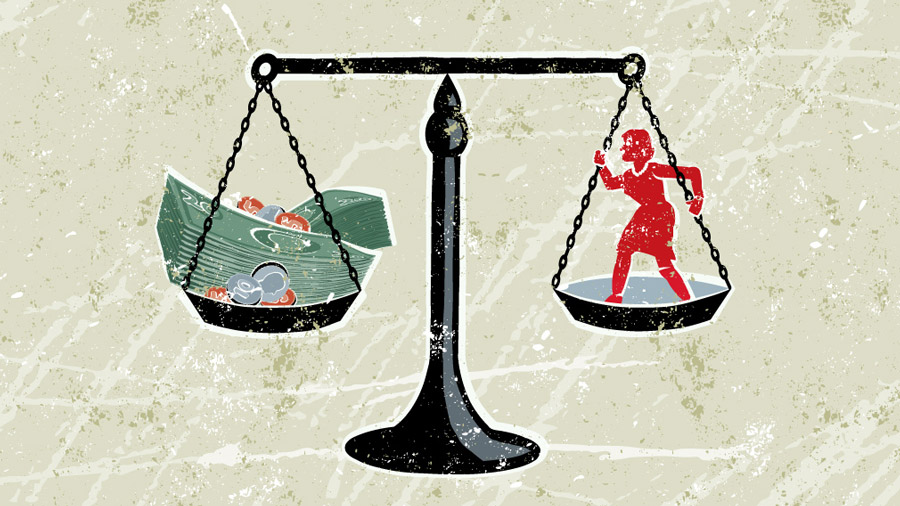
ASDA equal pay appeal rejected by Supreme Court
Major retailers facing equal pay claims from shop floor workers have eagerly awaited the Supreme Court ruling on whether warehouse staff could be used as comparators for equal pay purposes in Asda Stores v. Brierley. The long-running legal battle is driven by the belief that the Claimants should receive pay equal to their colleagues who work in the company’s warehouses.
The question reserved for the Supreme Court was not necessarily whether the work was equal but whether, for equal pay comparisons, female shop floor workers could compare their pay to higher-paid male distribution centre workers even if they are located at different sites, in different parts of the organisation/group, with very different pay arrangements/management structures.
For equal pay comparisons, an employee can claim equal pay for equal work with another employee or employees in the same employment. 'Same employment' means that the employee and his/her comparator are employed by the same or an associated employer, either at the same workplace or in different workplaces but under common terms and conditions.
Why is the right to equal pay so important to this case?
In 2016, the Employment Tribunal decided that Asda shop workers (who are mostly women) were entitled to pay equal to Asda warehouse workers (who are mostly men). It was held that both roles were comparable and of equal value and the decision to pay the warehouse workers more than the shop workers indirectly discriminated against women. This was due to the proportion of the shop floor workers being women, and more likely to work on the shop floor than in the warehouse. The decision was upheld by the Court of Appeal on 31 January 2019, allowing the comparison to be used as Asda applied common terms and conditions wherever they worked, which was sufficient to establish comparability.
Asda appealed to the Supreme Court, asking it to overturn earlier rulings, including the 2019 verdict by the Court of Appeal that found in favour of the shop workers and said, in a highly technical judgment, that they could compare themselves to the higher-paid depot worker on the basis that common terms across both parties had been observed.
The appeal was heard on 13 July 2020 and the Supreme Court has now delivered its final verdict. Many employers and employees alike waited with bated breath due to the effect the personal and industry specific decision would have.
Asda maintained throughout that pay rates in stores differ from pay rates in distribution centres because the demands of the jobs in stores and the jobs in the distribution centre are very different. They highlighted specifically that they operate in different market sectors and that they pay the market rate in those sectors, regardless of sex. The Supreme Court maintained that the roles were comparable and so open to equal pay claims.
The Supreme Court has now upheld the original decision, which has effectively rejected Asda’s position that the positions were not comparable.
The outcome and effect on the general public interest should not be underestimated. Conservative estimates at the time of the Supreme Court hearing had suggested that the decision going in favour of the Claimants could cost the supermarket industry around £10bn in backdated pay claims to workers and will affect many other industries, particularly those in manufacturing, food and hospitality, and retail more widely. Such an outcome is likely to come at a difficult time for many organisations as they are directly affected by the effects of COVID-19 and the loss of trade generally.
The outcome will also have repercussions for about 8,000 workers at other supermarkets including Tesco, Sainsbury’s, Co-op and Morrison’s.
It is important to note that whilst the Supreme Court has held the work is comparable, the individual cases could go on for a while yet. The legal team representing Asda staff will need to go on to argue that comparable roles should be paid equally, with the Supreme Court judges stressing the ruling did not mean the 44,000 claimants had won the right to equal pay.
This ruling relates to one stage of a complex case that is likely to take several years to reach a conclusion. The next stage now involves an Employment Tribunal deciding whether specific store and distribution jobs were of "equal value". If judges decided that different jobs were of "equal value", the litigation would then enter a third stage.
What employers need to consider
Employers now need to take stock and consider how workers are paid in different areas of their businesses.
If there are examples of a group of workers in your business who are mostly male, being paid more than another group, who are mostly female, then the business is exposed to an equal pay claim and should carry out a detailed and forensic assessment as to why this is so, documenting the rationale either way if the disparity in the pay can be warranted or if it needs to be remedied irrespective of the geographical location of the employees in question.
If the Employment Tribunal considers the job roles to be comparable using the same rationale which the Supreme Court has here and of equal value, and there is no other reason other than sex discrimination as to why the roles are not paid equally, the group of workers will be entitled to equal pay.
An equal pay claim decision can have significant financial implications for the employer as workers can claim back the difference between what they received and what their comparators received. The maximum period that back pay can be awarded is usually six years but, in certain circumstances, it can go back further.
rradar is a specialist litigation and commercial law firm







